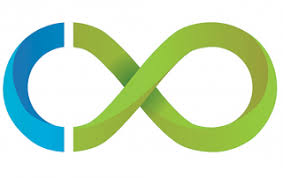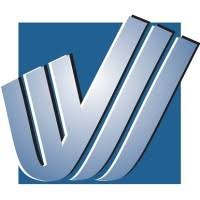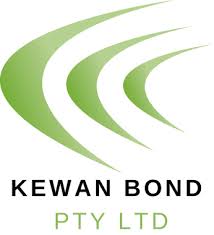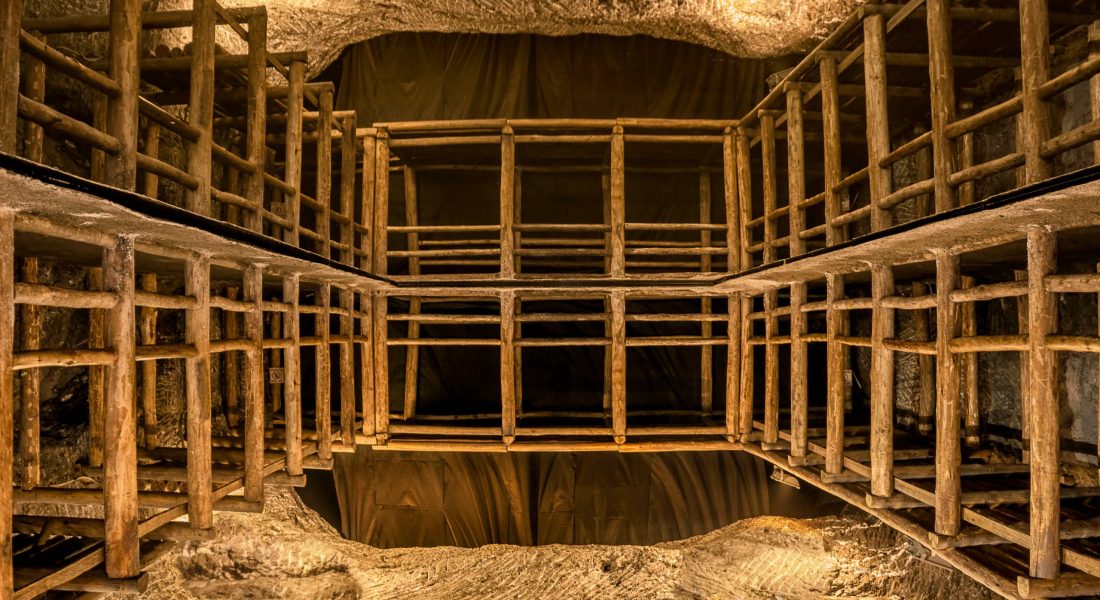Closing a mine isn’t just ticking boxes on a checklist – it’s a juggling act. You’ve got safety, environmental rules, long-term rehabilitation plans, and a ton of moving parts to keep track of. Luckily, the right tools can make the whole process way less stressful and a lot more manageable. Here’s a look at some of the best mine closure planning tools that are helping teams save time, reduce risk, and make smarter, data-driven decisions in 2025.

1. FlyPix AI
We at FlyPix AI work on transforming how we approach mine closure planning by automating the analysis of aerial, satellite, and drone imagery. For closure projects, we focus on collecting accurate, large-scale geospatial data quickly, so we can understand terrain, track changes over time, and identify potential environmental concerns without being slowed down by manual inspection. This allows us to integrate spatial insights directly into planning decisions, keeping rehabilitation and safety considerations grounded in real, up-to-date information.
Our system also makes it easier to collaborate across teams. We can annotate images, track changes, and share findings with engineers, environmental specialists, and regulators, helping everyone stay on the same page. By having this level of visibility and control over geospatial data, we can better support the various stages of closure planning, from initial assessments to long-term monitoring.
Key Highlights:
- Automated detection and outlining of terrain and vegetation features
- Quick analysis of large-scale aerial and satellite imagery
- Customizable AI models for specific site conditions
- Annotate and track changes over time for planning and reporting
- Centralized platform for team collaboration and data sharing
Who it’s best for:
- Environmental engineers involved in mine closure
- Project managers coordinating closure activities
- Regulatory compliance teams monitoring rehabilitation progress
- Geospatial analysts integrating aerial data into closure plans
Contact Information:
- Website: flypix.ai
- Email: info@flypix.ai
- LinkedIn: www.linkedin.com/company/flypix-ai
- Address: Robert-Bosch-Str. 7, 64293 Darmstadt, Germany
- Phone: +49 6151 2776497

2. Closurematic
Closurematic provides a structured digital platform for managing the entire mine closure process. The platform helps maintain continuity in planning, even when management or ownership changes, and ensures that all closure-related data is preserved and easily accessible. With built-in guidance features, users can focus on actions that have the most impact on environmental and social outcomes, aligning operational activities with closure goals over the long term.
The platform also supports detailed cost estimation and tracking, giving closure teams a clearer picture of financial liabilities and resource allocation. Its knowledge base and structured process mapping make it easier to coordinate activities, maintain regulatory compliance, and demonstrate accountability to stakeholders, making Closurematic a practical tool for managing closure projects consistently and with data-driven insight.
Key Highlights:
- Structured digital platform for mine closure management
- Guidance tools to focus on high-impact closure actions
- Continuity of closure data through changes in management
- Cost estimation and tracking for financial liability planning
- Knowledge base and process mapping to support planning and coordination
Who it’s best for:
- Mine closure planners and project managers
- Environmental and social risk teams
- Regulatory compliance officers
- Companies managing multiple closure sites or complex projects
Contact Information:
- Website: closurematic.com
- E-mail: closurematic@closurematic.com
- Facebook: www.facebook.com/Closurematic
- Twitter: x.com/closurematic1

3. Truescape
Truescape provides visual tools that help teams manage mine closure and rehabilitation planning by turning complex concepts into clear visualizations. These visualizations allow closure teams to model both progressive reclamation and end-of-life mine scenarios, making it easier to consider environmental, social, and economic factors from the earliest stages of a project. By representing closure plans visually, teams can assess potential risks, liabilities, and operational impacts while keeping all stakeholders informed throughout the process.
The platform also supports engagement with a wide range of stakeholders, including regulatory agencies, local communities, and traditional owners. This approach encourages dialogue and feedback during plan development, helping teams refine strategies and coordinate actions more effectively. With visual clarity at the core, Truescape helps closure managers communicate dynamic plans with accuracy and transparency, supporting decision-making across the life of the mine.
Key Highlights:
- Static and dynamic visualizations of mine closure plans
- Modeling of progressive reclamation and end-of-life scenarios
- Assessment of closure risks and liabilities
- Facilitates stakeholder engagement and feedback
- Supports transparent communication of closure strategies
Who it’s best for:
- Rehabilitation and closure managers
- Environmental and social risk teams
- Stakeholder engagement coordinators
- Project managers planning mine closure strategies
Contact Information:
- Website: truescape.com
- E-mail: tony.coggan@truescape.com
- LinkedIn: www.linkedin.com/company/truescape
- Address: 1345 6th Avenue 2nd Floor New York NY 10105 USA
- Phone: +1 518 538 3236

4. IGF Mine Closure and Post-Mining Transition
IGF Mine Closure and Post-Mining Transition provides resources and frameworks to guide the development of comprehensive mine closure plans. The platform emphasizes integrating closure considerations throughout the mine lifecycle, from planning and construction to operations, closure, and post-mining transition. By encouraging stakeholder consultation and progressive rehabilitation, it helps teams align environmental, social, and economic outcomes, ensuring that closure strategies are sustainable and informed by local needs.
The platform also supports governments and regulators in assessing risks, managing orphaned or abandoned mines, and ensuring financial assurance for closure activities. Tools such as the Abandoned Mines Inventory and Risk Assessment allow jurisdictions without existing inventories to evaluate challenges and plan remediation effectively. By connecting early mine planning decisions with long-term post-mining land use, IGF resources help create flexible closure options and promote trust among communities and regulators.
Key Highlights:
- Guidance on mine closure planning across the full mine lifecycle
- Emphasis on stakeholder consultation and progressive rehabilitation
- Tools for inventory and risk assessment of abandoned mines
- Support for financial assurance policies for closure funding
- Integration of closure planning with post-mining land use
Who it’s best for:
- Government agencies and regulators
- Environmental and social planning teams
- Mining companies integrating closure into project lifecycle
- Stakeholders managing abandoned or orphaned mine sites
Contact Information:
- Website: www.igfmining.org
- E-mail: Secretariat@IGFMining.org
- Facebook: www.facebook.com/IGFMining
- Twitter: x.com/IGFMining
- LinkedIn: www.linkedin.com/company/igfmining
- Address: 123 Slater, Suite 1001, Ottawa, Ontario Canada K1P 5G4

5. Mine Closure (GTK)
Mine Closure (GTK) provides an open-access platform focused on technologies and approaches for planning, executing, and monitoring mine closure projects. The platform offers structured guidance on closure processes, water management, waste handling, and post-closure monitoring, allowing teams to make informed decisions that reduce environmental, social, and economic impacts. By presenting systematic evaluations of closure methods and benchmarking international case studies, the platform supports consistent, data-informed approaches to closure planning.
The site also serves as a repository for research, development studies, and practical templates that help operators, authorities, and consultants align closure activities with legal requirements and best practices. It encourages knowledge sharing and continuous improvement by allowing contributors to provide insights on technologies, methods, and long-term performance, supporting the development of closure strategies that are grounded in practical experience and evidence.
Key Highlights:
- Comprehensive guidance on mine closure processes and objectives
- Evaluations of technologies for water management and treatment
- Case studies of post-closure waste and facility management
- Tools and templates for planning, executing, and monitoring closure
- Repository for R&D studies and international benchmarks
Who it’s best for:
- Mine operators and environmental managers
- Regulatory authorities overseeing closure compliance
- Consultants and researchers studying closure methods
- Teams planning post-closure monitoring and risk management
Contact Information:
- Website: mineclosure.gtk.fi
- E-mail: gtk@gtk.fi
- Facebook: www.facebook.com/GTK.FI
- LinkedIn: www.linkedin.com/company/geological-survey-of-finland
- Instagram: www.instagram.com/geologicalsurvey_fi
- Address: Geological Survey of Finland, 02151 Espoo, Finland
- Phone: +358 29 503 0000

6. Jones & Wagener
Jones & Wagener focuses on providing structured tools and services for mine closure management, emphasizing rehabilitation design and post-closure planning. Their approach includes optimisation of material movement and rehabilitation topography to align with environmental management requirements while reducing unnecessary handling and construction costs. By using predictive mine modelling, teams can simulate post-mining landscapes and plan concurrent rehabilitation, which helps streamline closure planning and reduce long-term liabilities.
The platform also incorporates long-term erosion modelling and closure cost estimation, allowing closure teams to proactively design measures that lower maintenance needs and anticipate financial obligations. Strategic placement of materials and optimised rehabilitation designs support a practical, data-informed approach to closure planning, ensuring that post-mining landscapes are both sustainable and manageable. This integration of technical planning and modelling makes Jones & Wagener relevant for projects aiming to combine operational efficiency with responsible closure practices.
Key Highlights:
- Optimisation of material movement and rehabilitation designs
- Predictive mine modelling for post-mining scenarios
- Long-term erosion and maintenance planning
- Closure cost estimation aligned with regulatory requirements
- Strategic material placement to reduce double handling
Who it’s best for:
- Mine closure and rehabilitation planners
- Environmental and social risk management teams
- Project managers overseeing concurrent rehabilitation
- Teams estimating closure costs and planning long-term site management
Contact Information:
- Website: www.jaws.co.za
- E-mail: post@jaws-int.com
- LinkedIn: www.linkedin.com/company/jones-&-wagener
- Address: Spaces, 100 Avebury Boulevard, Milton Keynes, MK9 1FH United Kingdom
- Phone: +44 (0)1908 965 045

7. Kewan Bond
Kewan Bond is all about helping teams make sense of the financial side of mine closure. Their tools and services focus on calculating closure liabilities and shaping strategies that fit a company’s specific needs. Think of it as a way to integrate closure planning right into day-to-day operations while keeping everything compliant with regulations.
They also provide auditing and verification support, which is a lifesaver when you need to make sure your closure plans actually meet the legal and reporting requirements. And by combining strategy analysis with cost and schedule assessments, Kewan Bond helps teams explore different approaches and figure out what’s going to work best – both operationally and financially.
Key Highlights:
- Preparation of tailored mine closure plans
- Calculation of closure liabilities and financial models
- Analysis of closure strategies and life-of-mine scenarios
- Auditing, verification, and regulatory compliance support
- Tools for cost, schedule, and risk evaluation
Who it’s best for:
- Mine closure planners and environmental teams
- Financial and accounting teams managing closure liabilities
- Project managers overseeing life-of-mine scenarios
- Regulators and auditors verifying closure compliance
Contact Information:
- Website: kewanbond.com.au
- E-mail: kewan@kewanbond.com.au
- LinkedIn: www.linkedin.com/in/kewan-bond
- Phone: +61 407 774 401

8. Stantec
Stantec provides a suite of tools and consulting services aimed at integrating mine closure planning into the broader lifecycle of mining operations. They focus on combining engineering, environmental, and community planning to ensure closure strategies are practical, sustainable, and aligned with regulatory expectations. By mapping out closure requirements early, they help teams anticipate environmental and social impacts while coordinating rehabilitation and reclamation efforts in parallel with ongoing operations.
Their approach often emphasizes the use of digital modeling, progressive rehabilitation, and adaptive planning to respond to site-specific conditions. This allows for better forecasting of post-mining land use scenarios and improved communication with stakeholders, which is crucial in meeting 2025’s increasingly complex closure planning standards.
Key Highlights:
- Integration of closure planning into overall mine operations
- Use of digital modeling to support rehabilitation strategies
- Coordination of environmental, social, and engineering aspects
- Adaptive planning based on site-specific conditions
- Support for progressive rehabilitation
Who it’s best for:
- Mine operators looking to align closure plans with operational activities
- Environmental and community managers coordinating stakeholder engagement
- Engineering teams responsible for reclamation design and implementation
Contact Information:
- Website: www.stantec.com
- E-mail: media@stantec.com
- Facebook: www.facebook.com/StantecInc
- Twitter: x.com/Stantec
- LinkedIn: www.linkedin.com/company/stantec
- Instagram: www.instagram.com/stantec
- Address: Over Court Barns, Over Lane Almondsbury, Bristol, United Kingdom BS32 4DF
- Phone: +44 1454 619533

9. SHERPA Reclamation
SHERPA Reclamation provides a structured approach to estimating and managing reclamation costs throughout the lifecycle of a mine. It combines a detailed Reclamation Cost Guide with a task-based cost model application, allowing mining teams to input site-specific data and adjust parameters for equipment, labor, and operational costs. This flexibility helps in producing accurate cost projections for closure and reclamation activities, while also keeping estimates up to date over the long term.
By integrating SHERPA into mine planning workflows, teams can align closure cost estimates with budgeting, financial reporting, and regulatory requirements. The system also enables review and reporting of total capital and operating costs, helping teams maintain clarity over projected expenditures. Its task-based methodology supports decision-making for concurrent rehabilitation and ensures resources are allocated efficiently during the closure planning process.
Key Highlights:
- Task-based reclamation cost estimation
- Customizable inputs for site-specific conditions
- Integration with budgeting and financial reporting processes
- Detailed reporting of capital and operating costs
- Supports regulatory compliance for closure and reclamation
Who it’s best for:
- Mining engineers and cost estimators responsible for closure planning
- Project managers tracking closure expenditures and resource allocation
- Companies needing long-term, defensible reclamation cost data
Contact Information:
- Website: www.costmine.com
- E-mail: info@costmine.com
- Facebook: www.facebook.com/CostmineIntel
- Twitter: x.com/costmineintel
- LinkedIn: www.linkedin.com/company/costmineintel
- Instagram: www.instagram.com/costmineintel
- Address: 100 N Mullan Rd Ste 102 Spokane Valley, Washington 99206, USA
- Phone: +1 509 328 8023

10. SGS Closure Planning and Monitoring
SGS helps teams tackle mine closure and reclamation from start to finish. They combine technical fieldwork with clever visual tools like 3D animations and photo-simulations, so you can actually see how a site might change over time. This makes it a lot easier to plan for landscape impacts, track progress, and put together technical plans that regulators will understand.
On top of that, SGS keeps an eye on environmental risks – like Acid Rock Drainage (ARD) – making sure mitigation strategies are built in and regulatory requirements are met. Basically, they take the guesswork out of planning by combining field investigations, water testing, and landscape analysis with practical closure strategies. It’s all about helping teams anticipate challenges, make smarter rehab decisions, and keep projects running smoothly from the first day to long after the mine shuts down.
Key Highlights:
- Production of reclamation and closure plans
- Site investigations including landscape and inventory analysis
- 3D animations and photo-simulations for visual planning
- Acid Rock Drainage (ARD) testing and mitigation
- Technical plans, specifications, and field supervision
Who it’s best for:
- Mine closure and reclamation teams managing progressive rehabilitation
- Environmental engineers handling ARD and site water management
- Project managers coordinating closure schedules and regulatory reporting
Contact Information:
- Website: www.sgs.com
- Facebook: www.facebook.com/sgs
- Twitter: x.com/SGS_SA
- Instagram: www.instagram.com/sgsglobal
- Address: 1 Place des Alpes, P.O. Box 2152, 1211, Geneva, Switzerland
- Phone: +41 22 739 91 11
Conclusion
Closing out a mine project isn’t just about finishing up operations and moving on – it’s about thinking ahead, understanding the land, and making sure every detail is accounted for. The tools we’ve looked at in this article show just how far mine closure planning has come. From cost modeling and earthworks scheduling to advanced simulations and environmental monitoring, each tool helps teams plan smarter, work more efficiently, and reduce surprises down the line.
Using these solutions isn’t about replacing judgment or expertise; it’s about supporting it. They help break down complex projects into manageable pieces, keep stakeholders informed, and give planners a clearer view of the challenges and opportunities ahead. By bringing together data, visuals, and predictive models, mine closure teams can make decisions with more confidence, ensure regulatory compliance, and ultimately leave sites in a state that’s safer and more sustainable. In 2025, the focus isn’t just on closing mines – it’s on doing it thoughtfully, deliberately, and with the right tools at your side.
